 Another type of parallelogram is the rhombus. Watch the video below (through 2:07) and note the similarities and differences between a rhombus and a parallelogram.
Another type of parallelogram is the rhombus. Watch the video below (through 2:07) and note the similarities and differences between a rhombus and a parallelogram.
Answer the following in your notes:
- Compare and contrast the lengths of the sides of the rhombus.
Interactive popup. Assistance may be required.
Check Your Answer
- Formulate the Double-Edged Straightedge Conjecture: If two parallel lines are intersected by a second pair of parallel lines that are the same distance apart as the first pair, then the parallelogram formed is a _____.
Interactive popup. Assistance may be required.
Check Your Answer

 Using this applet, http://www.mathopenref.com/rhombusdiagonals.html, continue your investigation of the rhombus.
Using this applet, http://www.mathopenref.com/rhombusdiagonals.html, continue your investigation of the rhombus.
As you move the individual points observe the diagonals.
Answer the following in your notes:
- Describe properties of the diagonals.
Interactive popup. Assistance may be required.
Check Your Answer
- Describe the relationships between the following angles: ∠ABC, ∠CBD, ∠BCD, and ∠ACB .
Interactive popup. Assistance may be required.
Check Your Answer
- Formulate the Rhombus Diagonals Conjecture: The diagonals of a rhombus are _____, and they _____.
Interactive popup. Assistance may be required.
Check Your Answer
- Formulate the Rhombus Angles Conjecture: The _____ of a rhombus _____ the angles of the rhombus.
Interactive popup. Assistance may be required.
Check Your Answer
Singular
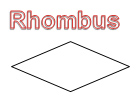
Plural
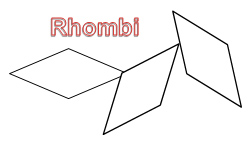
In your notes, complete the following conjectures about rhombi. Move your mouse pointer over each blank to see possible responses.
Based on what you now know about rhombi, let's work a couple of problems.
If you know that ABCD is a rhombus, find AB and BC.
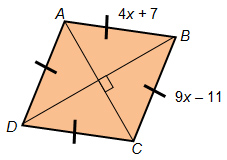
This means that AB = BC, so:
AB = BC
4x + 7 = 9x - 11
Solve for x:
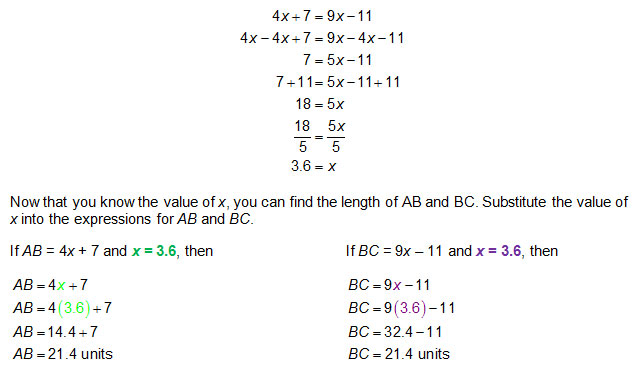
If you would like to try another rhombus problem, click here.
We're moving along! Let's add rhombus to our flow chart for quadrilaterals.
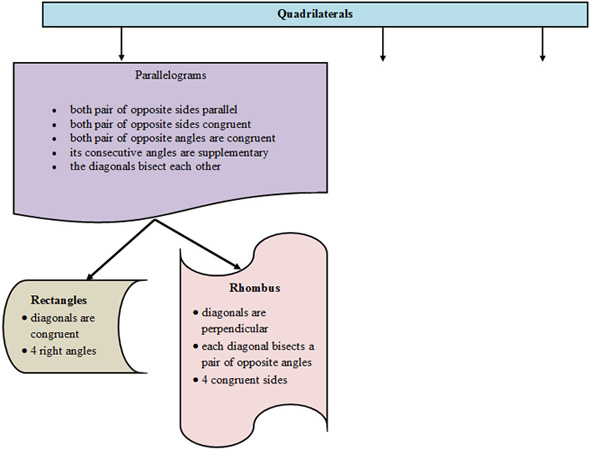
![]() Another type of parallelogram is the rhombus. Watch the video below (through 2:07) and note the similarities and differences between a rhombus and a parallelogram.
Another type of parallelogram is the rhombus. Watch the video below (through 2:07) and note the similarities and differences between a rhombus and a parallelogram. 

![]()
 Using this applet, http://www.mathopenref.com/rhombusdiagonals.html, continue your investigation of the rhombus.
Using this applet, http://www.mathopenref.com/rhombusdiagonals.html, continue your investigation of the rhombus. 







